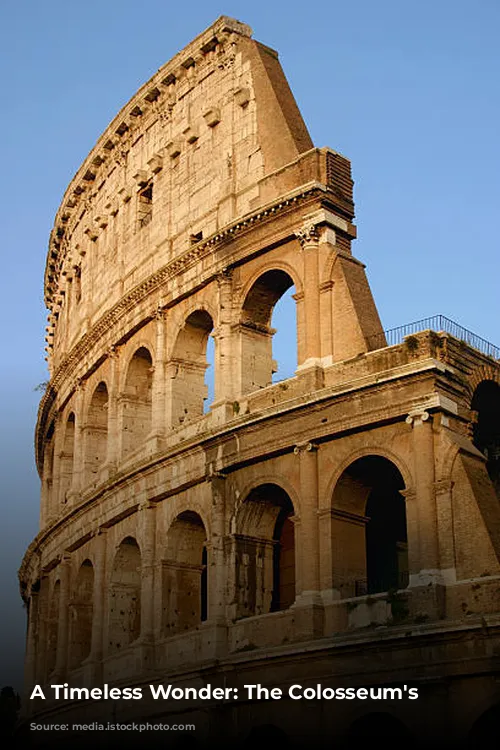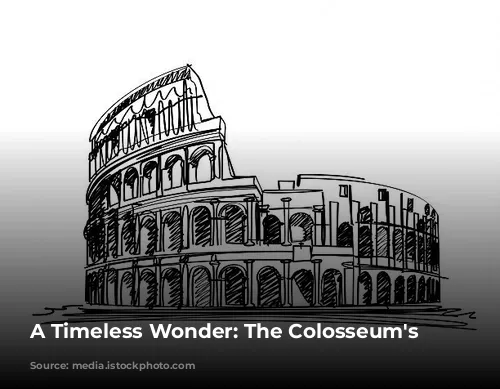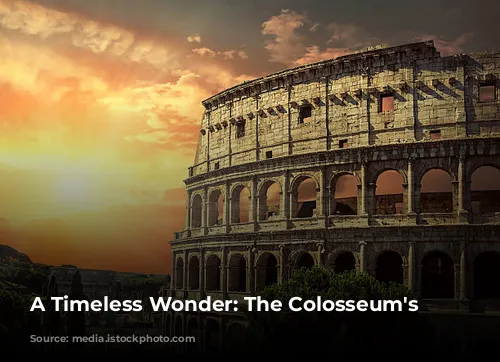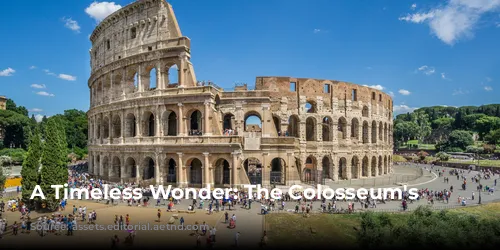The Colosseum, also known as the Flavian Amphitheater, stands as a testament to the architectural prowess of the ancient world. This magnificent structure, built in the first century A.D., is renowned for its grandeur and the bloody spectacles it once hosted, including gladiatorial combats and wild animal hunts. However, the Colosseum is more than just a monument to ancient entertainment; it’s a symbol of the enduring legacy of the Flavian Dynasty, one of Rome’s most influential periods.
This awe-inspiring structure serves as a reminder of Rome’s resilience and its commitment to public spectacle.

A Symbol of Resurgence
Following the turbulent years of fire, plague, and civil war, Emperor Vespasian, along with his sons Titus and Domitian, embarked on a ambitious project to restore Rome to its former glory. This period, known as the Flavian Dynasty, witnessed a massive building program that transformed the city. In 70 A.D., Vespasian commissioned the construction of the Colosseum in the city center, financed by the spoils of war from the siege of Jerusalem. This monumental endeavor served as a powerful symbol of Rome’s resurgence and the Flavian Dynasty’s might.
The Colosseum’s construction marked a significant turning point in Roman history, demonstrating the Flavian Dynasty’s commitment to rebuilding the city and asserting their dominance.
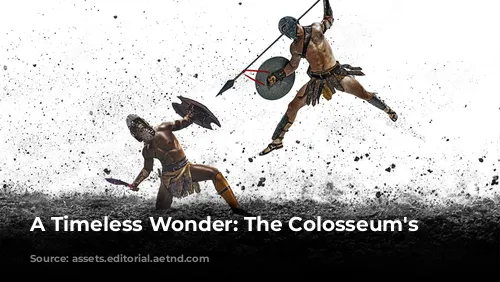
Architectural Brilliance
The Colosseum was not just a symbol of power; it was also an architectural and engineering marvel. The largest and most complex permanent amphitheater in the ancient world, it was constructed primarily of concrete, travertine, marble, stone, and timber. Rising to a height of 157 feet, roughly the height of a 15-story building, it could accommodate an estimated 50,000 to 80,000 spectators.
The Colosseum’s innovative use of concrete and its impressive scale set it apart from other amphitheaters, showcasing the engineering prowess of the ancient Romans.
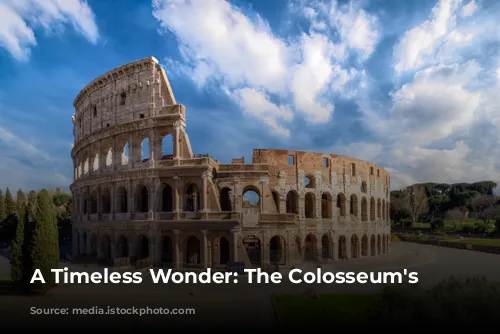
The Flavians and Social Hierarchy
The Colosseum’s construction was not just about spectacle; it was also a calculated move to reinforce the rigid social hierarchy of Roman society. The Flavian Dynasty recognized that their predecessor, Nero, had made his estate accessible to all, a move that displeased the senatorial nobility.
By building the Colosseum, the Flavians aimed to ensure public enjoyment while also preserving the existing power structure.
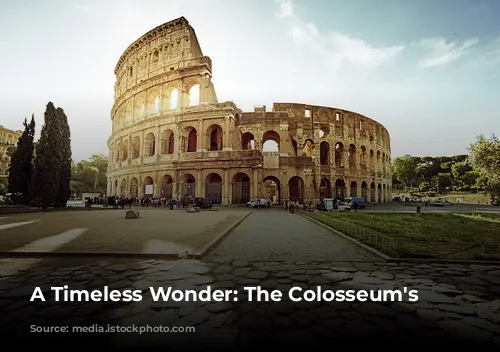
A City Within a City
The Colosseum was designed to reflect the social order of ancient Rome. The best seats, closest to the arena, were reserved for the Emperor and senatorial nobility. Above them sat the Equestrian Order, composed of wealthy merchants, artisans, and bureaucrats. The remaining 95 percent of Rome’s population, including women, foreigners, and the poor, occupied the higher, less desirable seats.
The Colosseum’s seating arrangement mirrored the social hierarchy of ancient Rome, highlighting the distinctions between different social classes.
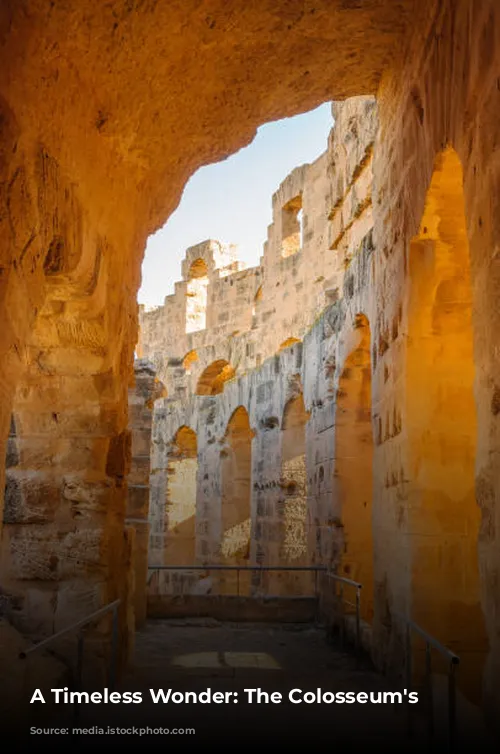
Engineering Innovations
The Colosseum was a masterpiece of engineering, featuring numerous innovations that facilitated its functionality. The structure had four entrances for dignitaries and 76 for the general public, allowing for the orderly flow of spectators. Corridors kept different social groups separate, preventing mingling, while the elliptical architecture ensured everyone could see the action in the arena.
The Colosseum’s innovative design, including its elaborate drainage system and retractable awning, made it a marvel of engineering and ensured the comfort of its spectators.
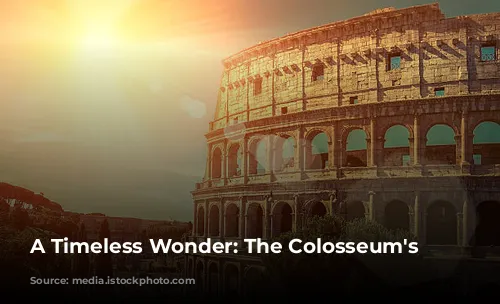
Building on Tradition
The Colosseum’s design drew inspiration from earlier structures, including Greek theaters. However, its use of concrete set it apart from its predecessors. Concrete construction allowed for a more durable and larger structure than the temporary wooden amphitheaters that had been common in ancient Rome.
The Colosseum’s construction marked a significant advancement in architectural engineering, demonstrating the Romans’ ability to build structures that could withstand the test of time.

A Lasting Legacy
The Colosseum’s remarkable survival after 2,000 years is a testament to the strength of its concrete foundation. The builders faced challenges due to the wetland area near the Tiber River, which required them to dig a deep foundation to stabilize the structure. The Colosseum’s sophisticated drainage system, retractable awning, and complex network of chambers and tunnels beneath the arena floor, known as the hypogeum, further demonstrate the Roman ingenuity.
The Colosseum’s enduring strength and innovative design have inspired countless architectural marvels throughout history, cementing its place as a timeless icon.
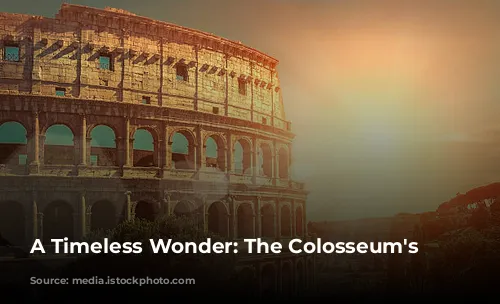
The Colosseum’s Origins
The exact cost of building the Colosseum is unknown, but many scholars believe that a significant portion of the funding came from the spoils of war, specifically the booty seized during the Siege of Jerusalem. An inscription at the Colosseum mentions the use of these funds for its construction.
The Colosseum’s construction was not only a grand project but also a controversial one, fueled by the spoils of war and potentially constructed with the labor of Jewish slaves.
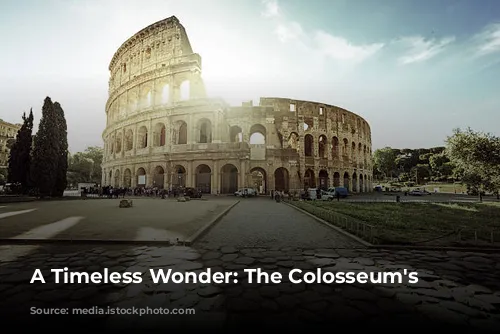
Who Built This Monument?
For many years, it was widely believed that Jewish slaves captured during the Siege of Jerusalem were responsible for building the Colosseum. While the use of slaves in construction was common during Roman times, there is no evidence to confirm that Jewish slaves were specifically used in building the Colosseum.
While the exact source of labor remains a subject of debate, it is clear that the Colosseum’s construction involved a significant workforce, likely comprising both free and enslaved individuals.
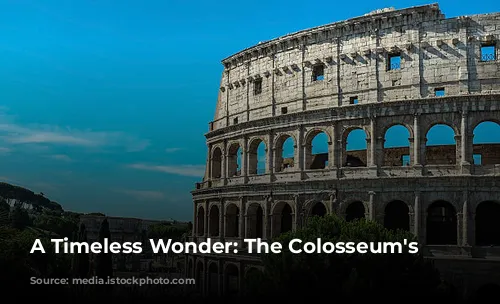
The Colosseum’s Enduring Influence
The Colosseum’s influence extends far beyond its architectural brilliance. It stands as the progenitor of modern outdoor sports stadiums, inspiring many of their key design elements. From its use of arches to support the structure to the elliptical shape and the systematic organization of entry and exit points, the Colosseum’s design has shaped the evolution of sports venues.
The Colosseum’s enduring legacy is evident in modern sports stadiums, which draw upon its innovative architectural principles, ensuring comfortable and efficient experiences for spectators.
The Colosseum, a timeless symbol of Roman grandeur, endures as a testament to the remarkable achievements of ancient civilization. From its architectural brilliance to its intricate engineering, the Colosseum continues to inspire awe and wonder centuries later, reminding us of the enduring legacy of Roman civilization.
